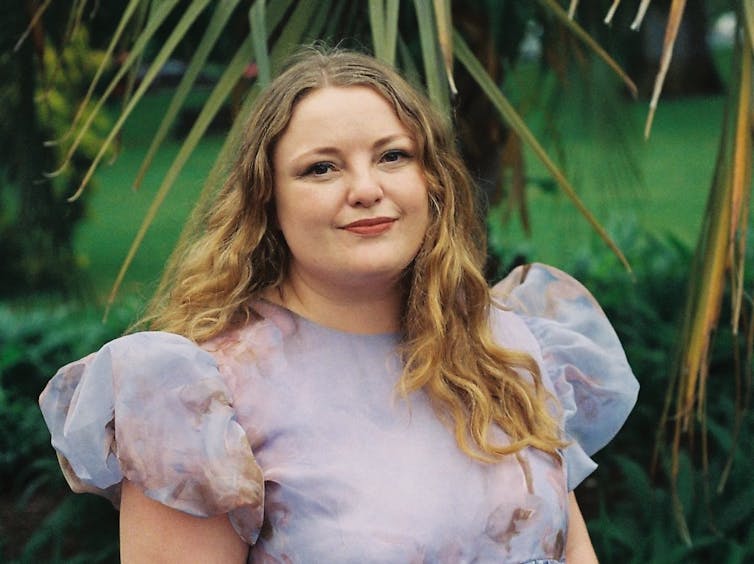Every week since August 2021, Australian author Bri Lee has released a regular weekly Substack newsletter, News & Reviews, to thousands of paid and unpaid subscribers.
The “news” offers commentary on current events and Lee’s particular interests and knowledge areas. “Reviews” can be of just about anything, ranging from books and articles to film and television, or fashion, architecture, events and miscellaneous “fancy things”.
The writing is erudite and well informed, but also very personal. The newsletter has been successful enough to support the launch of a monthly “magazine” edition of News & Reviews, featuring work from a range of other writers, like Stella Prize shortlisted graphic novelist Eloise Grills and playwright and Allen & Unwin publisher Nakkiah Lui.

Newsletter publications like News & Reviews are becoming increasingly popular outlets for writers at all stages of their careers. Lee notes it provides a useful way of generating regular income between her longer form, traditionally published writing. It also allows her a level of direct connection with her audience, without the algorithmic “flattening” of social media.
Read more: Big beautiful females and familiar dystopias: new graphic nonfiction interrogates 21st-century life
How Substack works
Lee was also drawn to the convenience of Substack itself. Newsletters can be managed from a simple dashboard on the platform and start-up costs are virtually nonexistent.
Rather than charge writers a fee, Substack takes a cut of revenue generated by reader subscriptions. Free and paywalled content tiers can be easily included in each newsletter.
Substack and similar platforms allow readers to directly support writers they care about. And writers are free to pursue niche topics and areas of interest, targeting smaller, more invested audiences.
Early adopters of Substack, like Bill Bishop and Kelly Dwyer, were largely journalists and media commentators who had already established a dedicated readership via news sites. In recent years, however, they have been increasingly joined by literary authors like Mary Gaitskill, John Birmingham, and Salman Rushdie, among others.
This comes at a time when it’s arguably much harder to publish literary fiction – and author incomes from conventional publication are often unsatisfactory.
Might Substack newsletters emerge as a viable alternative to print and digital books, and the conventional model of literary publishing?
Read more: Is Salman Rushdie's decision to publish on Substack the death of the novel?
New writing by leading authors
This seemed like a possible direction in 2021, when several prominent authors began to publish their new fiction through the platform. Salman Rushdie and Chuck Palahniuk were among the early adopters.
Both Rushdie and Palahniuk were deliberately courted via the Substack Pro program, which incentivises successful writers to publish content on Substack by offering them advance funding. This initiative has been a source of some controversy because Substack does not generally disclose which writers are on the Pro program, nor the size of the advances they are paid.
However, literary authors are not really using Substack as a replacement for conventional books. Rather, Substack publication can provide their subscribers with a kind of “early access period” for forthcoming works.

Palahniuk completed the serialisation of his novel Greener Pastures in 2022, and the novel is now due for publication with Simon and Schuster next year.
Similarly, UK author Hanif Kureishi is reworking his Substack reflections on his experience of being paralysed into a memoir, Shattered, also due to be published in 2024. It may be fair to say Substack operates more as a supplement to traditional literary publishing than as its alternative.
Often authors are using Substack for forms of writing that wouldn’t always be viable in other mediums. Since the last instalment of Greener Pastures, Palahniuk’s newsletter, Plot Spoiler, has largely focused on personal reminiscences and updates, as well as curating new short fiction from himself and his writing students.
Mary Gaitskill was invited to the platform in mid-2022 as Substack’s “writer in residence”. Since then, she has delivered a brilliant series of fortnightly essays on wide-ranging topics. She has shared her thoughts on the Depp-Heard trial, the “incel” movement, and the handling of public sex abuse scandals. This is interspersed with insightful reviews and interviews with other writers.

By contrast, George Saunders’ Substack, Story Club, has more of an explicitly educational focus. It offers guided, page-by-page readings of classic short stories, often combined with associated prompts and exercises for aspiring writers.
Saunders uses the newsletter format to make rigorous, textually focused literary criticism more accessible. According to Saunders, discussion of the mechanics of writing and narrative construction should not just be confined to creative writing classrooms.
Immediacy and intimacy
The appeal of author newsletters has probably come to reside more in the immediacy and intimacy of these kinds of writings, rather than the prospect of an advance look at forthcoming or developing fiction.
The novels will arrive eventually, but until then it can be enjoyable to find out what is on an author’s mind in any given week, through pieces like Salman Rushdie’s brief, withering assessment of Denis Villeneuve’s Dune.
Australian authors who have taken to Substack have followed some similar trajectories.
For the award-winning memoirist Maggie Mackellar, her newsletter is a weekly impetus for work that may go into a future book, as well as the chance “to write exactly what I want and not have to fit into a magazine’s agenda”. Mackellar’s Sydney Review of Books essay on the merits of the newsletter as a literary form is worth investigating.

Other writers, like YA authors Emily Gale and Lili Wilkinson, use Substack newsletters to engage their readers by offering tips and advice for writing, insights into what they’ve recently been reading and pop-culture commentary.
The Paris End
More recently, a new publication from Melbourne writers Cameron Hurst, Sally Olds and Oscar Schwartz follows the magazine-like Substack model explored by Bri Lee. The Paris End typically delivers two to three long-form essays each month (illustrated by cartoonist Aaron Billings) and a bi-weekly review section covering trends, books, dining and more.
The Paris End is hyperlocal in its focus and very conversational in style. Its writers are dedicated to reviving “the art of reportage”: they get out into the streets of Melbourne to interview locals and explore issues and events firsthand.
It aims to move away from the trend towards removed and highly reflective online writing on current events and controversies. By contrast, the Paris End writers get involved – they put themselves into the stories.
So far, they have covered gender studies controversies at the University of Melbourne, the Nightingale apartment project, the revival of traditional Catholicism, the (second!) campaign to save historical Melbourne music venue The Tote, Jordan Peterson’s recent Melbourne visit, and more.

The pieces are characterised by a sense of genial curiosity and open-mindedness. While the authors are forthright about their own positions, they are generally willing to give space to contrary voices in their pieces and entertain alternative points of view.
As a model, the Paris End writers are drawn to the wry, gossipy voice of the early New Yorker, which flourished in the early 20th century when there was still a sense New York was just “a big country town”.
It’s a term that no longer fits New York, but possibly applies to Melbourne today – and the awkward meeting point between booming big city populations and lingering small-town mentalities The Paris End’s editors aim to capture.
The Paris End is like the New Yorker if the entire magazine consisted of feature-length “Talk of the Town” pieces. It feels distinct and unique, and it is difficult to imagine it being delivered through any other medium.
Read more: Substack isn't a new model for journalism – it’s a very old one
Is it sustainable?
The growing volume of author newsletters on Substack and other platforms is already starting to feel overwhelming for some, however. After making a few well-intentioned subscriptions, my inbox is now starting to fill with unopened newsletters. They are in good company with the unwatched shows on my Netflix list, and the unread books on my shelves.
While there are benefits to the regular writing habits demanded by the newsletter model, it may not always be sustainable. Mary Gaitskill, for instance, has just announced a lengthy break, so she can concentrate on fiction writing: “I’ve been trying to work on fiction and do SStack and for right now it’s not working.”
For some authors, the income stream it generates may help to support longer writing projects. For others, the grind of generating enough weekly or fortnightly content to retain paid subscriber bases may not be worthwhile or workable.

One issue is that Substack users will typically need to have a preexisting readership and established networks. In most cases, writers will need to also be publishing material through other outlets to establish and maintain an audience for their newsletters.
Substack has recently attempted to make it easier for writers to promote their work directly on the platform. They have launched the Twitter-like Notes for shorter content, and added the ability for readers to follow writers’ profiles and updates before they subscribe to their newsletters.
These developments are moving Substack more in the direction of conventional social media, and it is not yet known whether they will help writers to establish or build audiences.
Despite these efforts, X (formerly Twitter) remains an important promotional tool for Substack writers. Strong engagement on the platform is often indicative of success on Substack (and has been one of the criteria used to recruit writers to Substack Pro).
This dependence is not always beneficial, however. In April of this year, links to Substack content were temporarily prohibited on Twitter. At the time, Twitter’s new owner Elon Musk had publicly objected to the similarities between Substack Notes and Twitter.
The matter now appears to be resolved, but it demonstrates how the current volatility surrounding X can impact Substack writers.
These concerns aside, Substack is still arguably the most prominent and accessible email newsletter platform available. Its rapid adoption by both local and international authors has resulted in the creation of fascinating and innovative new content.

